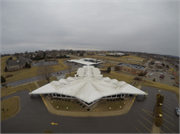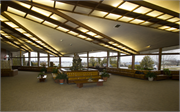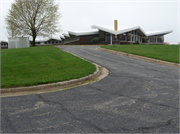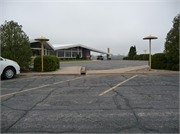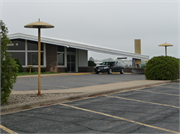Property Record
1505 Springdale St
Architecture and History Inventory
| Historic Name: | Gonstead Clinic of Chiropractic |
|---|---|
| Other Name: | |
| Contributing: | |
| Reference Number: | 234425 |
| Location (Address): | 1505 Springdale St |
|---|---|
| County: | Dane |
| City: | Mount Horeb |
| Township/Village: | |
| Unincorporated Community: | |
| Town: | |
| Range: | |
| Direction: | |
| Section: | |
| Quarter Section: | |
| Quarter/Quarter Section: |
| Year Built: | 1964 |
|---|---|
| Additions: | |
| Survey Date: | |
| Historic Use: | hospital/medical clinic |
| Architectural Style: | Contemporary |
| Structural System: | |
| Wall Material: | Brick |
| Architect: | John W. Steinmann |
| Other Buildings On Site: | |
| Demolished?: | No |
| Demolished Date: |
| National/State Register Listing Name: | Gonstead Clinic of Chiropractic |
|---|---|
| National Register Listing Date: | 4/7/2023 |
| State Register Listing Date: | 2/18/2022 |
| National Register Multiple Property Name: |
| Additional Information: | The Gonstead Clinic of Chiropractic building is an excellent example of Wrightian Style-influenced Contemporary Style design that was built in 1964 on a spacious multi-acre parcel of farmland that was then located just outside the eastern boundaries of the village of Mount Horeb. This parcel was purchased by nationally renowned chiropractor Dr. Clarence S. Gonstead (1898-1978) in 1962. Two years later his rapidly expanding practice made it necessary for him to build this large new brick and glass-clad clinic building on the site, which was designed by prominent Monticello, Wisconsin architect John W. Steinmann. Gonstead’s new clinic building is still highly intact today in 2021, it is still in use as a chiropractic clinic, and it is one-story-tall, it rests on a full poured concrete basement story, and it contains 19,000 square feet of space that is spread over both stories. The building has a Y-shaped plan that from the air reveals itself to be an abstract representation of the human spinal column, with the widest portion forming the head and shoulders and the narrowest portion, the spine. The building’s most distinctive feature is its complex multi-gable roof, which creates seven shallow-pitched gable ends on each of its two side elevations, and three larger shallow-pitched gable ends across the width of its main façade. The widest portion of the building contains the clinic’s stunning main reception area and several offices and adjusting rooms while the 60-foot-wide spinal column portion that connects to it contains more offices, more adjusting rooms, more dressing rooms, and specialized clinical spaces. All these rooms have beautifully crafted wood-paneled walls, and the overall effect is one of quiet luxury that is quite unlike a typical medical facility. |
|---|---|
| Bibliographic References: |
| Wisconsin Architecture and History Inventory, State Historic Preservation Office, Wisconsin Historical Society, Madison, Wisconsin |

